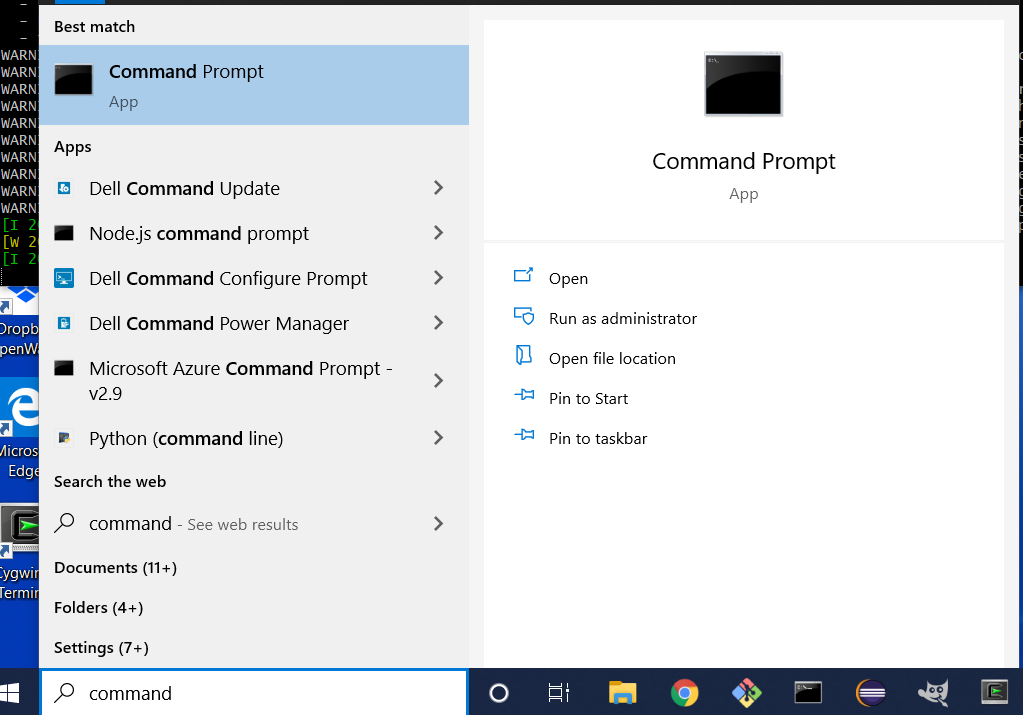
- Cygwin python 3 command install#
- Cygwin python 3 command archive#
- Cygwin python 3 command download#
- Cygwin python 3 command windows#
exec_prefix '/usr'Ī few other placeholders are used in this document: X.Y stands for the Statements shown below, and get the output as shown, to find out my For example, on my Linux system, I type the three Python Once the interpreter is started, you type Python codeĪt the prompt. Windows, choose Start ‣ Programs ‣ Python X.Y ‣

Under Unix, just type python at the shell prompt. YouĬan find out what your Python installation uses for prefix andĮxec-prefix by running Python in interactive mode and typing a few The same under Windows, and very often the same under Unix and macOS. Is installed to, and where it finds its libraries at run-time. Prefix and exec-prefix stand for the directories that Python
Cygwin python 3 command windows#
The default installation directory on Windows was C:\Program Files\Python under Python 1.6a1, 1.5.2, and earlier. If you build Python yourself on Linux (or any Unix-like system), theĭefault prefix and exec-prefix are /usr/local. Prefix and exec-prefix are usually both /usr on Most Linux distributions include Python as a standard part of the system, so Is pure Python or contains extensions (“non-pure”):Įxec-prefix /lib/python X.Y /site-packages Unix-based), it also depends on whether the module distribution being installed This location varies by platform andīy how you built/installed Python itself.
Cygwin python 3 command install#
If you don’t choose an installation directory-i.e., if you just run setup.py install-then the install command installs to the standard Install command does it for you), the work of the installĬommand is relatively simple: all it has to do is copy everything underīuild/lib (or build/lib. How installation works ¶Īfter the build command runs (whether you run it explicitly, or the Of installing Python modules and applications. In the future, more directories will be added to handle Python scripts,ĭocumentation, binary executables, and whatever else is needed to handle the job plat) directoryĬontains all Python modules (pure Python and extensions) that will be installed. Temporary files generated by the compile/link process that don’t actually get If a module distribution contains anyĮxtensions (modules written in C/C++), then the second form, with two ĭirectories, is used. Is used for “pure module distributions”-that is, module distributions that The first form, with just a lib directory, Where expands to a brief description of the current OS/hardware README.txt or possibly just README, which should explain thatīuilding and installing the module distribution is a simple matter of running Additionally, theĭistribution will contain a setup script setup.py, and a file named
Cygwin python 3 command archive#
Next, the archive will unpack into a similarly-namedĭirectory: foo-1.0 or widget-0.9.7. In the name of the downloaded archive, e.g.

using the Distutils.įirst, the distribution’s name and version number will be featured prominently Was packaged and distributed in the standard way, i.e.
Cygwin python 3 command download#
If you download a module source distribution, you can tell pretty quickly if it Setuptools documentation covers everything needed. This legacy documentation is being retained only until we’re confident that the See Installing Python Modules and Distributing Python Modules for more details. Pip package installer and the setuptools build system, rather than Out to be problematic, and it is now recommended that projects use the

System and package installer to the language runtime release cycle has turned In the many years since Python 2.0 was released, tightly coupling the build Standard way of installing them directly onto target systems. Python projects into Linux distro packages, and system administrators with a This provided Linux distro maintainers with a standard way of converting In Python 2.0, the distutils API was first added to the standard library. In the Python Packaging User Guide for more information.

Tools offer easier to use and more secure alternatives. This guide only covers the basic tools for building and distributingĮxtensions that are provided as part of this version of Python.


 0 kommentar(er)
0 kommentar(er)
